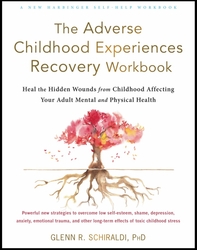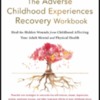Glenn R. Schiraldi, Ph.D. Psychology Today blog post, February 28, 2022
Are you a survivor of adverse childhood experiences (ACEs) who has frequent, disturbing nightmares? Know that you are not alone. There is much you can do to alleviate nightmares.
About Nightmares
Nightmares disrupt sleep. People might awaken in the night with a racing heart, breathing difficulty, sweating, haunting images, inability to move, and inability to get back to sleep.
Recurring nightmares are obviously distressing and exhausting. They increase arousal and cortisol secretion. The next day people feel fatigued and have problems with mood, memory, and performance. Common emotions during and after nightmares include fear, sadness, grief, guilt, shame, and disgust
Many who suffer nightmares begin to fear going to bed, leading to insomnia. The combination of disrupted sleep and the distress caused by nightmares increases the risk of several stress-related conditions, such as anxiety and depression.

How Often?
Many ACEs survivors experience nightmares weekly or even more often. Some studies indicate up to 80% of those with PTSD report nightmares that repeat for months or years following a trauma.
Nightmare Content
Nightmares might be literal or symbolic replays of ACEs. Sometimes they seem unrelated to ACEs— perhaps triggered by recent stress and having related themes.
Nightmares signal that there is memory material that the mind is trying to sort out. Normally, dreams help the brain process and settle distressing memory material. However, when people are extremely distressed, dreams can get stuck, replaying without change or resolution.
In addition, nightmares are re-traumatizing. Like a path worn through a meadow, recurring nightmares reinforce negative neural pathways in the brain. The long-term solution is not sleep medication, but resolving the nightmare and forging new neural pathways.
Settling Nightmares
This five-step process can help you lessen the number and intensity of your nightmares, and perhaps eliminate them. These steps parallel Imagery Rehearsal Training (IRT), which studies have generally found to reduce the frequency and intensity of nightmares, PTSD symptoms, and insomnia and anxiety related to nightmares. These steps avoid the side effects of sleep and anxiety medications, and the benefits are usually long lasting. It is wise to start with less intense nightmares, and work up to more distressing ones. You might wish to try these steps for a week or two to give them a fair trial. If this process feels overwhelming at any point, enlist the help of a trauma specialist.
1. Normalize your nightmares. Acknowledge that nightmares are common and often chronic in ACEs survivors. (However, don’t accept the belief that nightmares can’t be changed.) Think of your nightmares as simply distressing memory material that needs to be processed and settled, not avoided. It is reassuring to realize your nightmares probably contain themes similar to those of people who have also experienced difficult experiences like yours. Dream researchers have described the following common themes in nightmares (Barrett 1996):
- Danger, terror, death, or fear of death
- Being chased; being threatened again by a person or event that harmed you
- Being rescued
- Monsters (who might chase, harm, or frighten you)

- Revenge
- Failure
- Being punished
- Being alone
- Being trapped, powerless, helpless, or confused (e.g., freezing, can’t protect yourself; being lost)
- Physical injury (e.g., loosing teeth might symbolize loosing control or being wounded emotionally)
- Filth, garbage, excrement (might symbolize disgust, shame, loss of dignity or meaning in life, or evil)
- Sexual themes (e.g., following abuse, one might dream of good or bad sex, shadowing figures, worms, snakes going into holes, blood, shame, disgust, anger, hurting the assailant, being shunned)
- Violence, gore, killing, injury
- Relationship conflict
2. Confide your dreams. The principle of reconsolidation states that when we bring all aspects of a memory to conscious awareness, the brain can change the memory. The goal is to fully describe all the elements of the nightmare in great detail from the beginning to the end to gain the sense that the memory is completed and in the past. You might imagine that you are viewing the nightmare from a safe distance, like watching it on television.
You might describe your nightmare verbally. Telling the story in words helps to neutralize, integrate, and settle a difficult memory. You might relate it to a supportive person. You might also keep a small audio recorder or a journal beside your bed to briefly capture the nightmare. (You might use a lighted pen, so that bright light or blue light from a screen does not prevent you from going back to sleep.) During the day, turn the abbreviated recollections into a detailed narrative.
Relax and describe the following details:
- Facts. What is the setting? Who are the characters: What is happening? How did the nightmare begin and end? What’s the most disturbing part? What are you doing? Are there symbols and what do they represent?
- Bodily sensations. Include inner (visceral) sensations; sounds, smells, tastes, and tactile sensations.
- Feelings, such as sadness or fear.
- Thoughts. What are you thinking?
Some prefer to use artistic expression because the hand can often express what the mouth cannot. You might draw the various phases of a dream on separate sheets of paper from beginning, to middle, to end. You might draw how your body is reacting. The quality of the art is not what counts.
When you are finished describing the nightmare, take a few easy breaths to relax. Then read the description (or describe the drawings) aloud.
3. Rehearse a different, calmer response in the dream. For example, you might imagine calming yourself in the dream by kneading your forearm, breathing slowly, and saying to yourself, “This is just a dream. I’m safe now.” (Some find it helpful to draw the new response.) Before going to sleep, mentally rehearse this new response so that it is in place should the dream recur.
4. Change the nightmare in any way you’d like. You’ll know how. You might change the story and give it a new, positive ending. Write or draw and then talk out what you did to change your dream. Then mentally rehearse in great detail the new dream for five to twenty minutes at least once daily for a week or two. Make sure you actually experience the new images, bodily sensations, feelings, and thoughts. Make sure your new version has a beginning, middle, and end. You might imagine:
- Being rapidly rescued or protected by good and powerful people
- The assailant caught
- Healing severe injury by moving your hand over the wounds (anything is possible in imagery)
- Finishing business—perhaps saying what was needed; bidding farewell to loved ones who died and seeing them now well off (for instance, in heaven, smiling)
- Stopping, turning toward the scary monster chasing you, and asking in a friendly way, “What do you want to tell me?” Maybe make it smile, laugh, or dance. Stroke its pain. Or clap your hands and see it disappear.
- A new future, like walking through a peaceful meadow, calmly enjoying the warm sun and the scent of flowers, meeting friendly people, or thinking, “I’m safe and whole now. I survived!”
The only caution is that you not include violence in your changed dream. Violence does not usually settle nightmares.
End the rehearsal with deep relaxation. Tell yourself, “lf any nightmare starts, I’ll soften to it and shift to my newer version.”
5. Expect changes in dream content. As you rehearse different responses and changes to your nightmares, it is likely that you’ll notice shifts in your dream content. Perhaps your dreams of deceased persons now contain assurances that they are well off. Or perhaps your dreams now have other more positive outcomes. Maybe you realize you did your best under those difficult circumstances and simply now feel somewhat better or brighter about the future.
Note:
Research indicates that IRT is superior to medications. You can apply these steps on your own, although structured application with a mental health professional appears to yield even better results.
References
- Barrett, D. (Ed.). Trauma and Dreams. Cambridge, MA: Harvard University Press.
- Schiraldi, G. R. (2021). The Adverse Childhood Experiences Recovery Workbook. Oakland, CA: New Harbinger.
- Schiraldi, G. R. (2017). The Resilience Workbook. Oakland, CA: New Harbinger.
About the Author
Glenn R. Schiraldi, PhD, has served on the stress management faculties at The Pentagon, the International Critical Incident Stress Foundation, and the University of Maryland, where he received the Outstanding Teacher Award in addition to other teaching/service awards. His fourteen books on stress-related topics have been translated into seventeen languages, and include The Adverse Childhood Experiences Recovery Workbook, The Self-Esteem Workbook. The Resilience Workbook, and The Post-Traumatic Stress Disorder Sourcebook. The founder of Resilience Training International (www.ResilienceFirst.com), he has trained laypersons, emergency responders, and clinicians around the world on the diverse aspects of stress, trauma, and resilience.

Photo credits: Tero Vesalainen/istockphoto; sarah5/istockphoto




Comments (0)